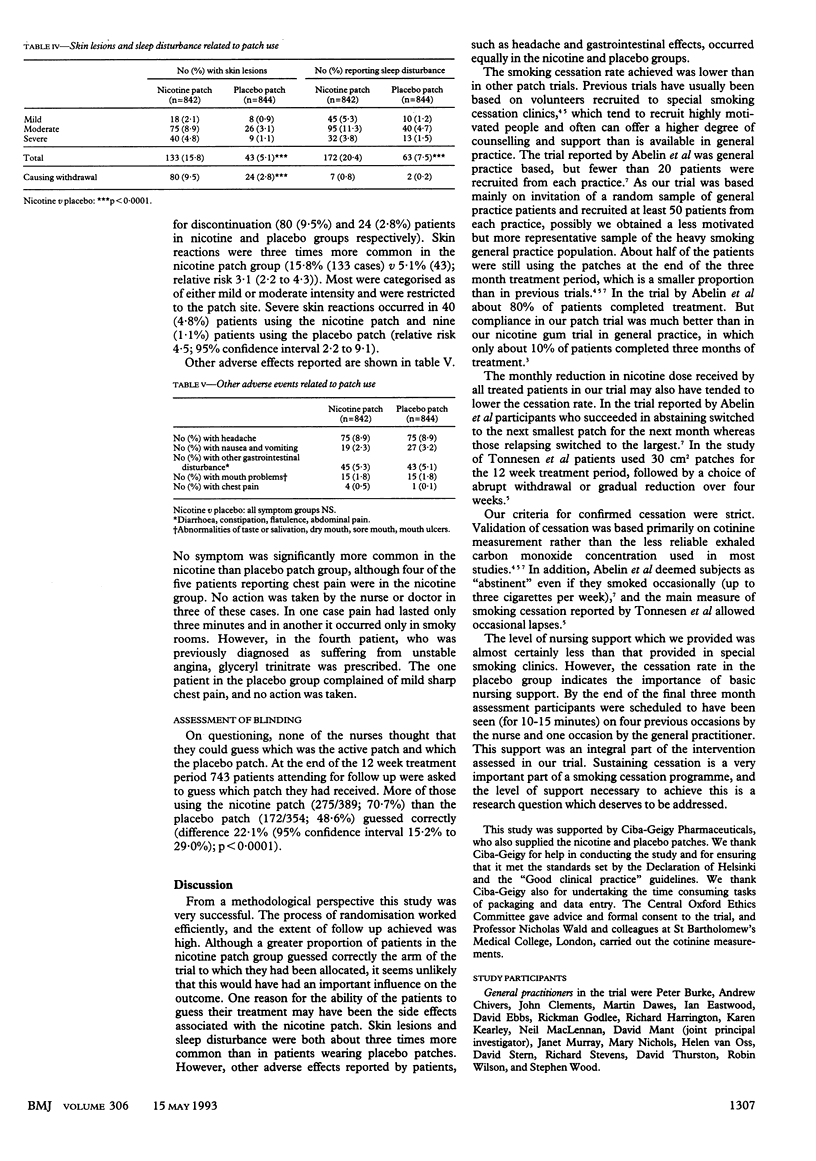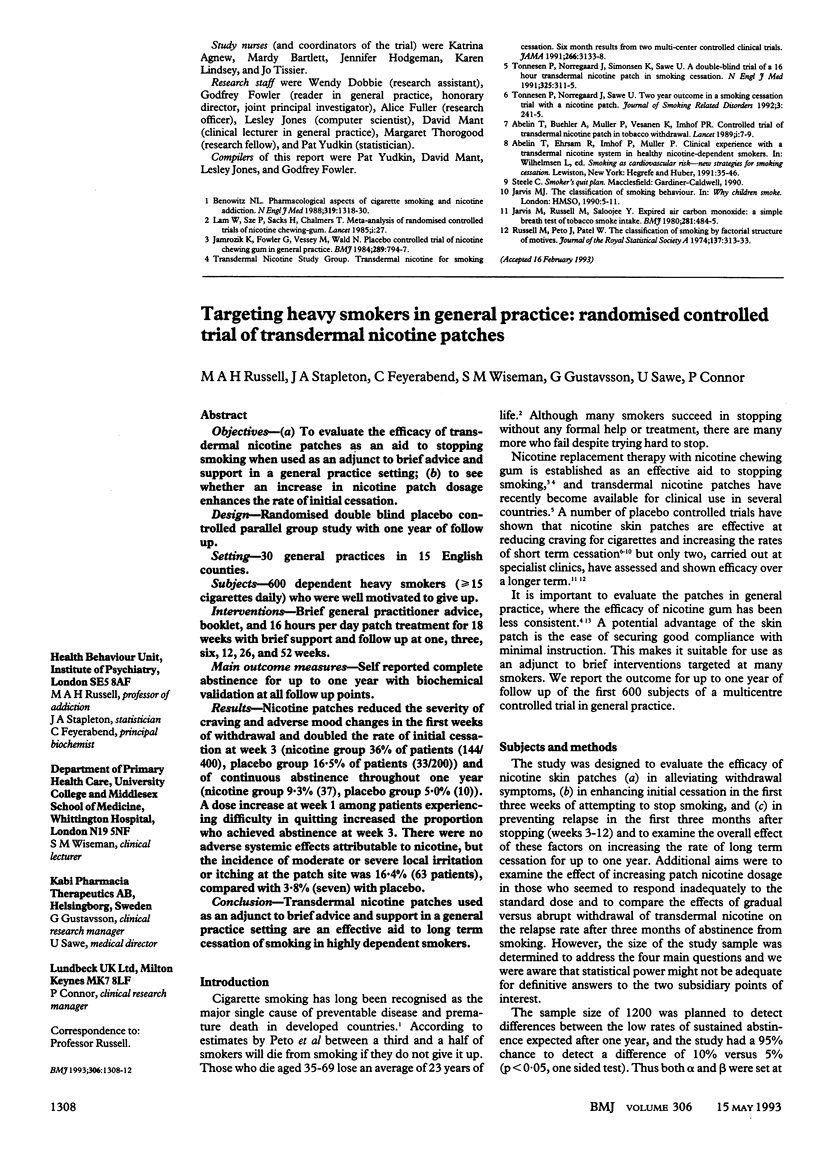Abstract
OBJECTIVE--To assess the effectiveness of 12 weeks' treatment with a 24 hour transdermal nicotine patch in helping heavy smokers to stop smoking; also to assess the value of a specially written support booklet about smoking cessation and patch use compared with a simple advice pamphlet. DESIGN--Double blind placebo controlled randomised trial with a 2 x 2 factorial design. SETTING--19 general practices in Oxfordshire. SUBJECTS--1686 heavy smokers aged 25-64 (mean cigarette consumption 24/day; mean duration of smoking 25 years). MAIN OUTCOME MEASURE--Sustained cessation for the last four weeks of the 12 week treatment period, confirmed by saliva cotinine estimation (226/262 cases; 86.3%) or expired carbon monoxide concentration (36/262; 13.7%). Patients lost to follow up (155/1686; 9%) were assumed to have continued to smoke. RESULTS--Cessation was confirmed in 163 patients (19.4%) using the nicotine patch and 99 patients (11.7%) using the placebo patch (difference 7.6% (95% confidence interval 4.2% to 11.1%); p < 0.0001). There was no significant advantage in using the more detailed written support material. The most important adverse effect of the patch was local skin irritation, which occurred in 15.8% (133/842) and 5.1% (43/844) of patients using the nicotine and placebo patches respectively, was graded as severe in 4.8% (40) and 1.1% (nine), and was stated as a reason for withdrawal from the trial in 9.5% (80) and 2.8% (24). CONCLUSION--Nicotine patches are effective in a general practice setting with nursing support, but the extent to which this effect is sustained cannot be assessed until the results of longer term follow up are known.
Full text
PDF




Selected References
These references are in PubMed. This may not be the complete list of references from this article.
- Abelin T., Buehler A., Müller P., Vesanen K., Imhof P. R. Controlled trial of transdermal nicotine patch in tobacco withdrawal. Lancet. 1989 Jan 7;1(8628):7–10. doi: 10.1016/s0140-6736(89)91671-1. [DOI] [PubMed] [Google Scholar]
- Benowitz N. L. Drug therapy. Pharmacologic aspects of cigarette smoking and nicotine addition. N Engl J Med. 1988 Nov 17;319(20):1318–1330. doi: 10.1056/NEJM198811173192005. [DOI] [PubMed] [Google Scholar]
- Jamrozik K., Fowler G., Vessey M., Wald N. Placebo controlled trial of nicotine chewing gum in general practice. Br Med J (Clin Res Ed) 1984 Sep 29;289(6448):794–797. doi: 10.1136/bmj.289.6448.794. [DOI] [PMC free article] [PubMed] [Google Scholar]
- Jarvis M. J., Russell M. A., Saloojee Y. Expired air carbon monoxide: a simple breath test of tobacco smoke intake. Br Med J. 1980 Aug 16;281(6238):484–485. doi: 10.1136/bmj.281.6238.484. [DOI] [PMC free article] [PubMed] [Google Scholar]
- Liver transplantation 1985 and beyond. Lancet. 1985 Jan 5;1(8419):27–28. [PubMed] [Google Scholar]
- Tønnesen P., Nørregaard J., Simonsen K., Säwe U. A double-blind trial of a 16-hour transdermal nicotine patch in smoking cessation. N Engl J Med. 1991 Aug 1;325(5):311–315. doi: 10.1056/NEJM199108013250503. [DOI] [PubMed] [Google Scholar]


